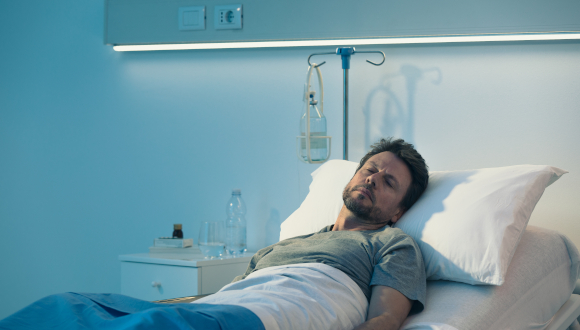Closed-eye imaging can track pain in unresponsive patients

Technology breakthrough from TAU can help identify clinical responses under anesthesia
Support this researchA new technological development from Tel Aviv University (TAU) can monitor changes in pupil size and gaze direction behind closed eyes using touchless infrared imaging.
Tracking changes in pupil size can help identify a state of wakefulness in sleep, anesthesia, and intensive care and help track the depth of sedation, detect seizures and nightmares, and recognize pain or responsiveness that may occur after trauma and in intensive care departments. The researchers say that this technology has strong potential to become an important tool in clinical care.
The team of investigators from TAU was led by doctoral student Omer Ben Barak-Dror, under the joint supervision of Professor Yuval Nir from the Department of Physiology, Faculty of Medical and Health Sciences, Sagol School of Neuroscience, and Department of Biomedical Engineering; and Professor Israel Gannot from the Department of Biomedical Engineering. The research was published on August 6, 2024, in Communications Medicine.
“Pupil size changes all the time, dilating or contracting to regulate the amount of incoming light, while providing valuable clinical information,” Professor Nir explains. “We all know that our pupils get smaller in bright light and larger in darkness.
“But this is only one reason why pupils change size. They also dilate when we’re stimulated, for example when we react to a sudden event or when we are in pain. In such cases, our autonomic nervous system serves as an alarm and prepares us to take action. Tracking pupil size and eye movements can be critical in many clinical situations. However, until now this has been limited to open-eye scenarios. There was no method that allowed anyone to do this when eyes are closed.”
The new research describes innovative technology that combines short-wave infrared imaging with deep learning algorithms to perform touchless pupillometry and eye tracking behind closed eyelids. “To establish and validate our technology, we focused on the pupillary light reflex, when the pupil constricts in response to a sudden flash of light, and then dilates back to normal,” says Barak-Dror, lead author of the study. “This is a basic reflex that occurs symmetrically across the two eyes in healthy people. We performed experiments testing our technology on the closed eye while comparing the results to the open eye data.”
“Our method can successfully track the precise dynamics of the pupillary light reflex in closed-eye conditions, revealing the changes in pupil size following each light flash in individual subjects, and also accurately estimating where the eye gaze is directed to, within a few degrees of accuracy,” Professors Nir and Gannot add. “The system operates at wavelengths where light has its maximum depth of penetration in biological tissue, and by analyzing the data using deep learning algorithms, we can go beyond what is typically possible with standard methods of near-infrared imaging.”
The investigators say that their technology, backed by a patent application, paves the way for developing devices with wide-ranging clinical and commercial applications in domains ranging from sleep medicine, through monitoring sedation level and intraoperative awareness in anesthesia, to assessing pain and reactivity in unresponsive patients or in neurology intensive care and trauma wards.
The study was supported by grants from the Zimin Foundation and a breakthrough technology program in the Israeli Ministry of Science and Technology.